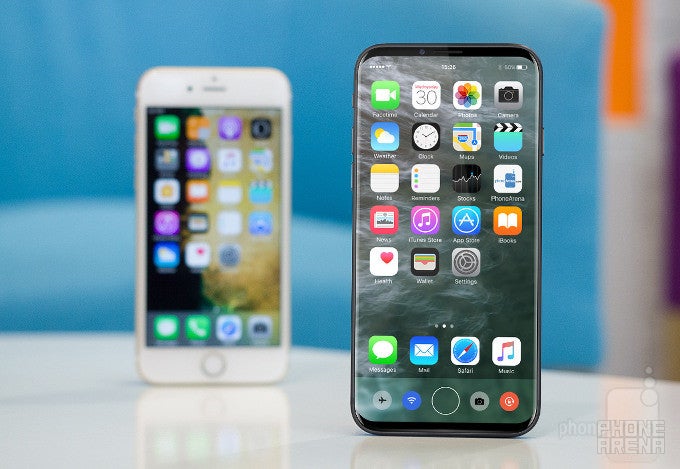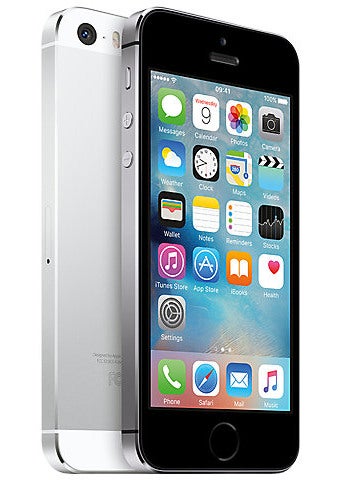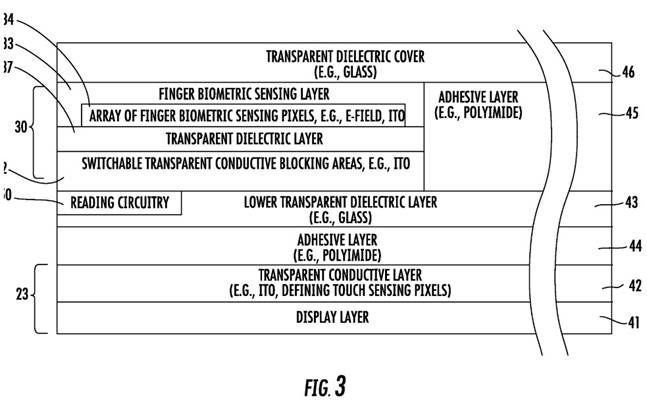iPhone 8 may have fingerprint-scanning screen for constant authentication and peace of mind

iPhone 8 is rumored to have an all-screen front, leaving no space for a dedicated fingerprint sensor button.
The first modern smartphone fingerprint scanner made its debut with the Apple iPhone 5s, and it changed everything. This biometric feature was so perfectly executed, it revolutionized smartphone security and privacy in a quiet, yet profound way. With just a touch on the home button, the phone was able to instantly and reliably authenticate the user and let them in. Boom. Done. No more annoying passwords, passcodes, or any other leftovers from the keyboard era.
The next big step in smartphone security, and peace of mind

The iPhone 5s introduced the modern smartphone fingerprint scanner.
It's not a secret that both Apple and Samsung are working on a special fingerprint scanner implementation, that has the sensor itself hidden somewhere behind the display. The goal of this would be to allow the manufacturers to reduce bezels around the screen, but still keep the fingerprint scanner on the front side of the device. Samsung has thus far been unable to implement this technology in its top-tier phones, but there is still hope that Apple may succeed in time for the iPhone 8. In fact, the future of fingerprint scanning on smartphones looks incredibly bright.
“We will probably move to a world of ubiquitous sensors. So it’s perfectly reasonable, and consistent with Apple’s patent application, to imagine that the entire screen of a phone would have fingerprint sensing capabilities, unlike the current small patches of fingerprint readers.” says Dr. Thomas Keenan, Professor at the University of Calgary and cybersecurity expert. “Like all technologies, this will get cheaper and it will be feasible to have a “sensor layer” under the screen.” he adds.
What's in it for me?
Leaving technology for technology's sake aside, though, the most important question here, if Apple does indeed manage to successfully bring this innovation to market this year, would concern the actual benefits such an invention may allow. And those, judging by the information we have now, are quite numerous. For instance, the “sensor layer” would be always scanning your fingerprints as you use your smartphone. This would mean that from the moment you pick up and touch your phone (no matter what part of the screen), you'll be recognized and granted access to the system. One would argue that the good fingerprint sensors of today already work quite seamlessly, but this new vision for completely invisible, yet always-there authentication sounds like the next big step for smartphone user experience.
Keenan, who has explored the subject of our waning digital privacy in a book of his own (Technocreep: The Surrender of Privacy and the Capitalization of Intimacy), goes further, predicting that such a development may lead to a radical change in our smartphone culture:
Now, people are very reluctant to leave their phone or tablet unlocked in case somebody grabs it. If your device is continuously scanning your biometrics, that becomes less of a problem. It will also play a part in high value transactions. Let’s say you are trading securities or entering important medical information from your phone. With sensors spread throughout the screen, operating invisibly, your device can continuously make sure it is your fingers on the keyboard.
If the smartphone does become smart enough so it can continuously scan the biometrics of its user, this would mean that we wouldn't need to worry about where we leave our device, and whether we remembered to press that lock button. Upon being picked up by an unauthorized user, the smartphone will be able to lock itself automatically, denying access to whatever information is kept inside.
“... in some instances it may be undesirable to have a user perform an authentication in a separate authentication step, for example switching between tasks to perform the authentication.”

Apple patent illustration depicting a fingerprint-sensing layer covering most of the screen area.
In human terms, this would mean that the authorization prompts users currently get with certain actions, such as when attempting to buy a new game on the App Store or a movie in iTunes, would no longer be needed. With the fingerprint sensors working silently behind the scenes, the user would already be authenticated when they initiate the purchase, saving them the need to see and act upon a separate pop-up prompt.
Follow us on Google News













Things that are NOT allowed:
To help keep our community safe and free from spam, we apply temporary limits to newly created accounts: